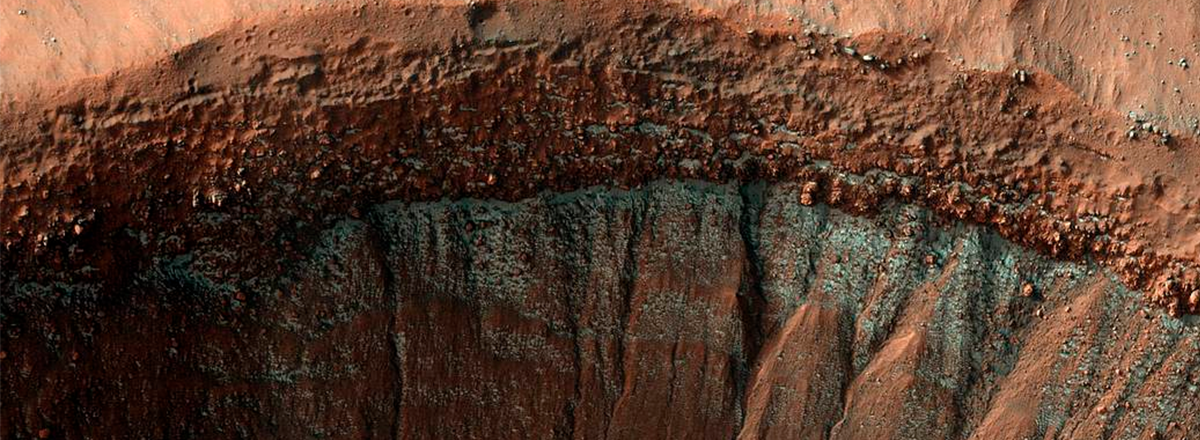Mars Reconnaissance Orbiter Captures Dry Ice on Mars
Dry ice is formed by the freezing of carbon dioxide from the Martian atmosphere. In midwinter, this frost reaches from the poles down to the middle latitudes, up to 50° latitude.

NASA shared an image taken by the Mars Reconnaissance Orbiter (MRO) that shows a crater located in the southern hemisphere of Mars. Its slope is covered with dry ice.
Polar caps on Mars consist of two layers. At the bottom, there are deposits of a mixture of water ice and dust, stretching for hundreds of meters. At the top, there is a layer of dry ice, which is visually observed as a polar cap.
Dry ice is formed by the freezing of carbon dioxide from the Martian atmosphere. In midwinter, this frost reaches from the poles down to the middle latitudes, up to 50° latitude. With the onset of summer, dry ice begins to sublimate, and the apparent size of the cap decreases.
However, in some cases, patches of dry ice can form on Mars closer to the equator. Most often, this occurs on pole-facing slopes that receive less sunlight. The MRO image shows just that. It shows a crater near 37° south latitude. In the photo, you can see that the south-facing slope is covered with carbon-dioxide frost.

